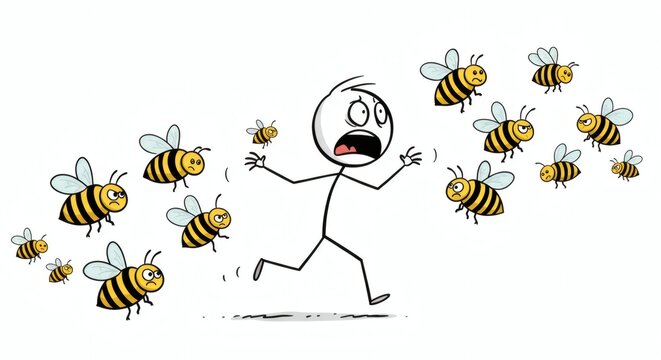By now I’m sure you’ve noticed that there are a lot of options available when it comes to beekeeping gloves. With the wide range of price and styles, how do you know which one to choose and, …how can you be confident you aren’t wasting your money?
Whether you’re a beginner or an old pro, this quick guide can help you make sense of the wide world of beekeeping gloves and be confident of your purchase.
As with most things, it’s important to focus on the fundamentals. So, what are the key things a beekeeping glove is supposed to do? Here are the two main functions:
- Prevent/reduce bee stings.
- Allow you to perform the necessary tasks of beekeeping.
In addition to these two main functions, it would also be nice if beekeeping gloves were comfortable enough to be worn for long periods of time without getting all hot and sweaty inside.
So let’s talk about #1 above: Preventing or reducing bee stings.
When it comes to beekeepers getting stung by bees, there’s no such thing as 100% sting-proof anything. Even if there were, it’s always possible to make mistakes, not close a zipper, or tear an opening in a glove or garment while working with bees. Old-timers will tell you that if bees get riled up enough, they can sting through most materials, even thick leather gloves.
Most beekeeping gloves rely on a loose fit to create motion and space between the exterior and your skin. If you keep your hands busy in motion wearing an old-style loose-fitting leather glove, you will rarely get stung. Unfortunately, there are times when your hands are lifting things and they remain motionless with the leather pulled tight against the skin… and inevitably, bees will be able to sting right through the gloves. For whatever reason, this usually happens most often on the back of the thumb area.
There are only two types of materials that bees cannot sting through. Solid materials such as thick rubber, plastic, metal, wood, etc is one group. In theory one could use one of these materials to create some armor plating so to speak on the back of gloves. …but then the bees would just sting through the spaces between these armor plates. These materials also hold in heat and don’t breathe. They’re just not a good option.
The other type of material that bees cannot sting through is basically any material that keeps the bee’s “butt” at least 4mm away from your skin. This is approximately the average length of a bee’s stinger. Keeping some distance between the bee and your skin is the idea behind the familiar 3-layer ventilated mesh material used in some beekeeping suits.
It’s important to note that this 3-layer ventilated mesh material is usually less than 3mm of spacing when pulled close to the skin. Consequently, those suits also rely on a very loose fit to prevent bee stings. Because of this, the common 3-layer ventilated bee suit material is not well suited for gloves unless the gloves are worn quite loose.
So what does knowing about bee stings do to help you decide which type of gloves are best for you? It helps by giving you a parameter to gauge how important bee sting prevention is in the gloves you choose. If you have a hive or two of docile bees out back and you work with your bees slowly and cautiously, it’s likely you’ll rarely get stung regardless of what type of glove you wear. On the other hand, if you’re a commercial beekeeper who needs to do the job quickly regardless of the weather and the bee’s mood, you’re going to get stung often if you don’t wear adequate protection. If you keep bees in certain southern areas with aggressive or feral bees, your hands will get stung far too many times every day if you don’t wear the best protection.
Let’s talk about #2 from the beekeeping glove functions we mentioned above: “Beekeeping gloves must allow you to be able to perform the necessary tasks of beekeeping.”
This is where things get tricky. One reason is that as a particular style of beekeeping glove offers better protection against bee stings… the bulkier it is and the more difficult it becomes to perform beekeeping tasks. Taking hive covers off, lifting frames to inspect bees, or moving hive boxes is one thing and can generally be done with any bulky gloves. Doing repairs, writing things down, handling live queens, grafting eggs/larvae, or any delicate tasks are virtually impossible to do well with most traditional beekeeping gloves.
Historically, beekeepers have had to make trade-offs when deciding what gloves to wear or even whether or not to wear gloves for certain tasks. Again, this is where you need to evaluate how much freedom of performance you need in your gloves in order to decide which gloves to buy. If you don’t often need to perform tasks that require fine dexterity, then you can opt for the lower-priced bulky traditional gloves. If you expect to perform tasks requiring some fine motor skills from time to time, a more modern style of glove will be a better choice.
The Conclusion:
Perhaps it should go without saying, but I’ll say it anyway… it’s generally a good idea to choose the option that gives you the most options and best performance. With that in mind, the Apis Tactical Beekeeping Gloves are the only modern beekeeping gloves currently on the market that have back of the hand (and thumb) ventilated protection that maintains more than 4mm distance between the bees and your skin. This offers the most protection against bee stings of any ventilated beekeeping glove. Further, the way that back of the hand mesh system stretches to keep tension on the goatskin palm, allows for the most sensitivity and dexterity you can get from gloves of this type. This concept has been used in many industries for decades for a reason.
Now that protection and dexterity have been combined in a new, modern beekeeping glove, the best choice is clear. Apis Tactical Beekeeping Gloves.





